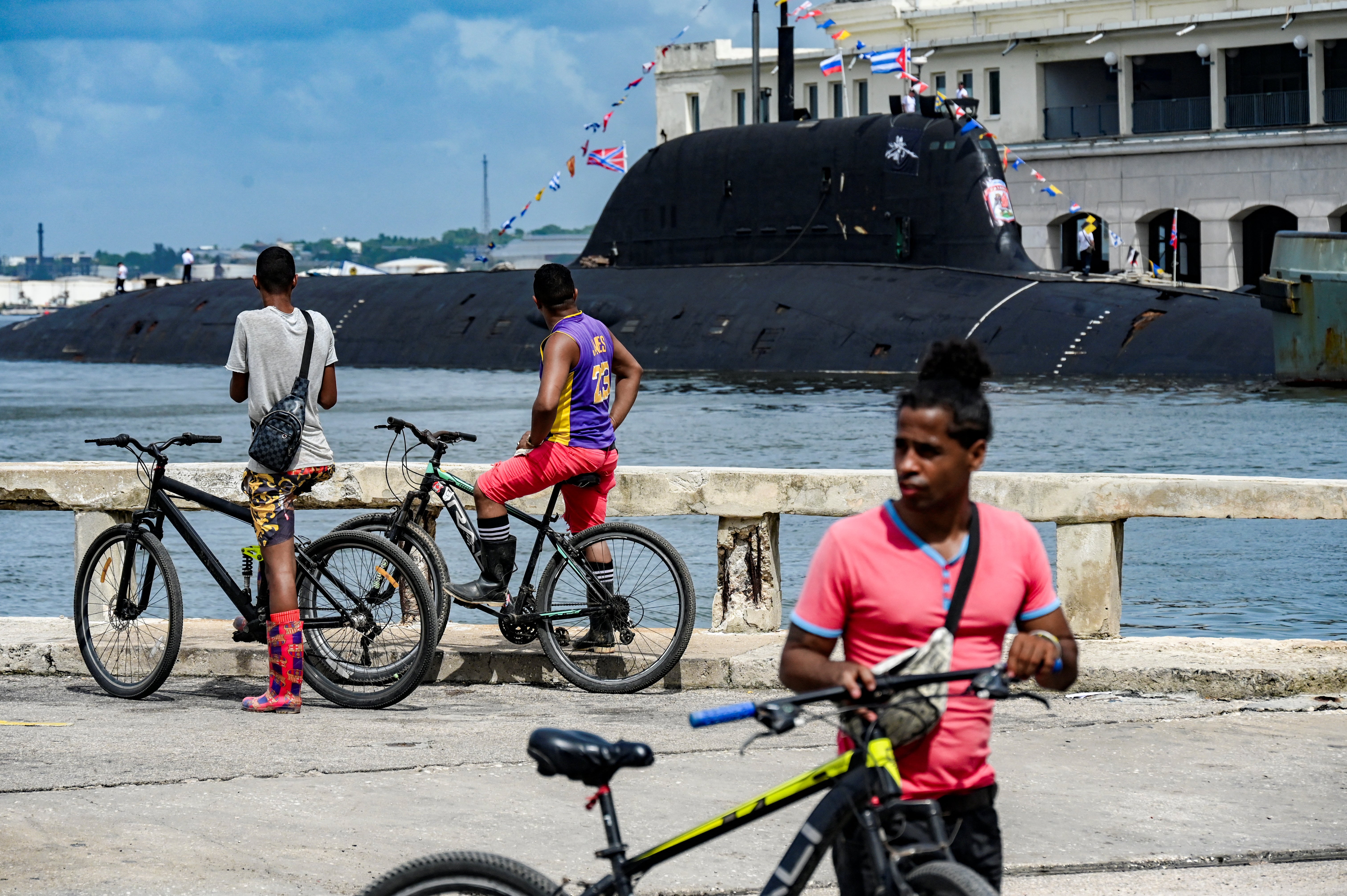US show of force as American submarine pulls into Cuba after Russian fleet arrived for Caribbean maneuvers
A U.S. Navy submarine has pulled into Guantanamo Bay, Cuba, in a show of force as a fleet of Russian warships gather for planned military exercises in the Caribbean

Your support helps us to tell the story
From reproductive rights to climate change to Big Tech, The Independent is on the ground when the story is developing. Whether it's investigating the financials of Elon Musk's pro-Trump PAC or producing our latest documentary, 'The A Word', which shines a light on the American women fighting for reproductive rights, we know how important it is to parse out the facts from the messaging.
At such a critical moment in US history, we need reporters on the ground. Your donation allows us to keep sending journalists to speak to both sides of the story.
The Independent is trusted by Americans across the entire political spectrum. And unlike many other quality news outlets, we choose not to lock Americans out of our reporting and analysis with paywalls. We believe quality journalism should be available to everyone, paid for by those who can afford it.
Your support makes all the difference.A U.S. Navy submarine has arrived in Guantanamo Bay, Cuba, in a show of force as a fleet of Russian warships gather for planned military exercises in the Caribbean.
U.S. Southern Command said the USS Helena, a nuclear-powered fast attack submarine, pulled into the waters near the U.S. base in Cuba on Thursday, just a day after a Russian frigate, a nuclear-powered submarine, an oil tanker and a rescue tug crossed into Havana Bay after drills in the Atlantic Ocean.
The stop is part of a “routine port visit” as the submarine travels through Southern Command's region, it said in a social media post.
Other U.S. ships also have been tracking and monitoring the Russian drills, which Pentagon officials say do not represent a threat to the United States.
“This is not a surprise. We’ve seen them do these type of port calls before,” Pentagon spokeswoman Sabrina Singh said Wednesday when asked about the Russian drills. “We of course take it seriously, but these exercises don’t pose a threat to the United States.”

The exercises, however, come less than two weeks after President Joe Biden authorized Ukraine to use U.S.-provided weapons to strike inside Russia to protect Kharkiv, Ukraine’s second-largest city. Russian President Vladimir Putin then suggested his military could respond with “asymmetrical steps” elsewhere in the world.
Singh said it wouldn't be a surprise to see more Russian activity around the United States in such global exercises. The drills are in international waters, and U.S. officials expect the Russian ships to remain in the region through the summer and possibly also stop in Venezuela.
Russia is a longtime ally of Venezuela and Cuba, and its warships and aircraft have periodically made forays into the Caribbean.
Russian ships have occasionally docked in Havana since 2008, when a group of Russian vessels entered Cuban waters in what state media described as the first such visit in almost two decades. In 2015, a reconnaissance and communications ship arrived unannounced in Havana a day before the start of discussions between U.S. and Cuban officials on the reopening of diplomatic relations.